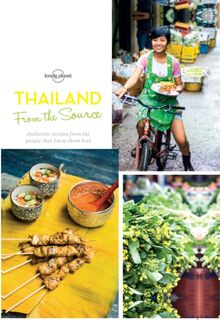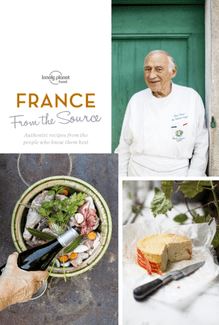-
 Univers
Univers
-
 Ebooks
Ebooks
-
 Livres audio
Livres audio
-
 Presse
Presse
-
 Podcasts
Podcasts
-
 BD
BD
-
 Documents
Documents
-
- Cours
- Révisions
- Ressources pédagogiques
- Sciences de l’éducation
- Manuels scolaires
- Langues
- Travaux de classe
- Annales de BEP
- Etudes supérieures
- Maternelle et primaire
- Fiches de lecture
- Orientation scolaire
- Méthodologie
- Corrigés de devoir
- Annales d’examens et concours
- Annales du bac
- Annales du brevet
- Rapports de stage
La lecture à portée de main
Vous pourrez modifier la taille du texte de cet ouvrage
Découvre YouScribe en t'inscrivant gratuitement
Je m'inscrisDécouvre YouScribe en t'inscrivant gratuitement
Je m'inscrisEn savoir plus
Vous pourrez modifier la taille du texte de cet ouvrage
En savoir plus

Description
Sujets
Informations
| Publié par | Lonely Planet |
| Date de parution | 01 août 2016 |
| Nombre de lectures | 3 |
| EAN13 | 9781760343118 |
| Langue | English |
| Poids de l'ouvrage | 18 Mo |
Informations légales : prix de location à la page 0,1000€. Cette information est donnée uniquement à titre indicatif conformément à la législation en vigueur.
Extrait
CONTENTS
Introduction
Northern Japan
Stews and soups are popular in these cooler climes, along with local seafood specialities, such as salmon and crab in Hokkaido
Tokyo & Central Japan
Tokyo’s modern cuisine, like that of many thriving capital cities, blends tradition with flavours from around the globe. To the west, Nagano and the Japan Alps are regions of hearty mountain fare
Kansai
This region boasts both the country’s most refined cuisine – in Kyoto, where imperial influences reign – and the hearty, down-to-earth fare of merchant-founded Osaka
Western Japan
Surrounded by two seas, this region is known for fresh fish all year round. Rice and vegetables are abundant due to the moderate climate; dishes here are sweet and flavourful
Southern Japan
With their subtropical climate, Okinawa and the southwest islands are known for pork dishes and a local cuisine notably distinct from that of other parts of Japan
Basic recipes
Recipe sources
Glossary
About the contributors
Acknowledgements
INTRODUCTION
Ramen noodles, miso, sashimi. It would be easy to assume that Japanese cuisine is all about food.
But no. Or at least, it’s not just about the food. The cuisine of this teeming archipelago of 3000 islands is a living part of its culture. And much like the fibre of the Japanese soul, it has been shaped by the nation’s history, and not least by the rise, over a millennium ago, of Japanese Buddhism.
The sushi we know and love today owes its creation to the rise of the religion – the popularity of early sushi proliferated after emperors banned the eating of meat. The dish, as with Japanese laws, has greatly evolved since then. The first sushi was not even eaten with rice; instead it was simply a meal of fish that had been preserved in the fermenting grains.
In Japan it’s believed that food should be devoured with all five senses: not just smell, taste and sight, but also touch (the texture of ingredients, the smooth warmth of bamboo chopsticks), and even sound (a high-end ryotei is oddly quiet, the better to appreciate the experience of eating).
Like rice, which originally came from China, the introduction of the Five Elements Philosophy has shaped Japanese cuisine for centuries. Focusing on earth, wood, fire, water and metal, the philosophy rests on the principle that each element must be balanced against each of the others, in order for the world and everything in it to maintain its equilibrium.
Put simply, each type of ingredient relates to one of the five elements by its taste and colour: sweet and yellow, orange or brown to earth; sour and green to wood; bitter and red to fire; salty and black, blue or purple to water; and spicy and white to metal. Even cooking techniques link to one of the five elements: boiling, steaming and poaching to water, for example, and smoking to wood.
Any Japanese meal – from simple home-cooked fare to the most structured, formal kaiseki – aims to blend each of these elements for balance and nutrition. Unsurprisingly, this provides myriad benefits for our health, as does the act of lingering over our food and cherishing each mouthful with all our senses – the latter has been proven to aid digestion and portion control. It’s clear that meals taken the traditional Japanese way are good for us. That they are such a pleasure to consume, too? Well, that’s just a happy coincidence.
COOK’S NOTES
This book aims to deliver Japan’s best local dishes – direct from the kitchens where they’ve been perfected and practised for decades or generations. Authenticity is at the heart of every dish we feature.
That means that some ingredients may be difficult to find in general stores. Most should be available in Asian supermarkets or online but, where possible, we have suggested more easily sourced substitutes, too. The glossary will help to identify unfamiliar ingredients.
In the spirit of authenticity, we have retained the chefs’ original methods in these recipes, but have always tried where possible to offer alternatives, to help you produces these dishes when time is pressed or specialist equipment not available.
For basic recipes for rice and dashi .
NORTHERN JAPAN
Stews and soups are popular in these cooler climes, along with local seafood specialities, such as salmon and crab in Hokkaido
IGA-MENCHI
Squid croquettes
HOTATE MISO KAI-YAKI
Scallops simmered in miso
TEPPO-JIRU
Miso soup with crab
HITTSUMI
Hand-pulled noodle soup
MISO RAMEN
Noodle soup
HAKODATE TOMOEGATA KAISEN-DON
Hakodate seafood rice bowl
GYUTAN
Barbecued beef tongue with beef tail soup
IMO-NI
Taro stew
JINGISUKAN
Smoky mutton and onions
MENME YU-NI
Braised whole fish wrapped in kombu
ZUNDA MOCHI
Crushed soybean rice cakes
IGA-MENCHI
Squid croquettes
These crisp-fried croquettes of juicy squid, sweet onion and vegetables are a staple in the northern Tohoku city of Hirosaki. The Tsugaru Akatsuki Club members champion homemade.
Chef // Sumago Kudo Location // Tsugaru Akatsuki Club, Aomori
I ga means squid in the Tsugaru dialect of western Aomori. The local variety, Pacific flying squid – yes it really can propel itself up and over the water – comes from the Tsugaru Strait, the freezing stretch of water that separates Tohoku, the northernmost part of mainland Japan, from the more-northern-still island of Hokkaido. Hirosaki, an old castle city on the Tsugaru plains, is 50km south of the strait. ‘In the old days, squid was a real luxury and we only served it for company. Now it’s a one-hour drive to the port, but before cars it was a day in a horse and carriage,’ explains Samago Kudo, the leader of the Tsugaru Akatsuki Club.
The Tsugaru Akatsuki Club members are active in preserving and gathering traditional recipes from the Tsugaru region of Aomori. All of the members belong to farming families. Kudo, now 75, founded the group 20 years ago, prompted by the desire to preserve the knowledge and traditions of the older generations, those who could remember the days before cars and refrigerators.
Iga-menchi is one of those dishes originally designed to stretch a precious source of protein. The main body of the squid, the tender, almost creamy part, was served as a sashimi dish and the tougher bits (the legs and ears) were minced for use in iga-menchi. As squid is now readily available, the whole thing is often used in the dish. Vegetables like onions, carrots and cabbage are commonly added – although every household has a slightly different way of serving it depending on what they grow. Iga-menchi can be served plain, with soy sauce, or tonkatsu sauce for dipping, and as Kudo says, ‘It’s an excellent snack to accompany sake.’
IGA-MENCHI
Squid croquettes
‘What they serve in restaurants isn’t good. They skimp on the squid and add too much flour. Homemade is better.’
Serves 5
Preparation time: 30 mins
Cooking time: 30 mins
300g (10 ½ oz) squid
¼ head of cabbage (about 200g/7 oz), finely shredded
2 small onions or 1 large, finely diced
50g (1 ¾ oz) carrot, finely diced
1 medium egg
80g (2 ¾ oz) flour
5g ( ¼ oz) katakuriko (potato starch)
1 tbsp sake
cooking oil, for frying
salt and pepper 1 Rinse the squid under cold running water and remove the insides, eyes and beak. Use a sharp knife to dice the squid into 5mm ( ¼ in) pieces. Then using the cutting edge of the knife, pound the squid repeatedly for several minutes – this will tenderise the pieces. 2 Rinse the cabbage and place in a strainer lined with paper towels. Squeeze out any excess water. Transfer the cabbage in a large bowl with the squid, onions and carrots, then crack in the egg. Add the flour and katakuriko, and season generously with salt and pepper. Mix thoroughly with a wooden spoon, then add the sake and set aside while you heat up the pan. 3 Add enough oil to a large frying pan to come 1cm ( ½ in) up the side and set over high heat until almost smoking. Test whether the oil is hot enough by adding a drop of batter – it should sizzle when it hits the oil. 4 Carefully add generous spoonfuls of the mixture into the hot oil, in batches of four or five – stand back as they will spit – and shallow fry for 4–5 minutes until the edges of each croquette are crisp and golden. Flip over and fry for a further 2 minutes, until cooked through. Serve immediately.
HOTATE MISO KAI-YAKI
Scallops simmered in miso
This is a fortifying, easy-to-make – and decadent – dish. People come from all over to eat the scallops at Matsuura Shokudo, simmered with miso and egg, and served in their shells.
Chef // Ritsu and Keisuke Matsuura Location // Matsuura Shokudo, Aomori
M atsuura Shokudo is a small diner that may seem unassuming from the outside, but it is the best place to eat in Aomori. Boasting an unusually long history of 125 years, Keisuke Matsuura’s grandparents first opened the restaurant in 1891, the year the railroad arrived in Noheji. Back then, Noheji was a busy port town. Trade had brought wealth and cosmopolitan ideas, and the town flourished, offering food more sophisticated than elsewhere in the north. Noheji’s glory days are now gone, but the thing the town still has going for it is its scallops. They are considered the best in Japan. There isn’t really any reason to come to Noheji other than to eat scallops at Matsuura Shokudo (and people do come for that reason).
Food in Aomori is intensely local; in Noheji they make miso kai-yaki with scallops. Just up the coast in Mutsu, they make it with squid. Keisuke’s wife, Ritsu Matsuura, explains that the dish was traditionally served to women after childbirth as a restorative and, considering it’s a bit of a luxury, a kind of ‘push present’. She adds, laughing: ‘Actually we call it miso “ka-yaki” here. We tend to slur our words because it’s too cold to open your mouth all the way.’ Noheji has a cold climate and this is all the better for the
-
 Univers
Univers
-
 Ebooks
Ebooks
-
 Livres audio
Livres audio
-
 Presse
Presse
-
 Podcasts
Podcasts
-
 BD
BD
-
 Documents
Documents
-
Jeunesse
-
Littérature
-
Ressources professionnelles
-
Santé et bien-être
-
Savoirs
-
Education
-
Loisirs et hobbies
-
Art, musique et cinéma
-
Actualité et débat de société
-
Jeunesse
-
Littérature
-
Ressources professionnelles
-
Santé et bien-être
-
Savoirs
-
Education
-
Loisirs et hobbies
-
Art, musique et cinéma
-
Actualité et débat de société
-
Actualités
-
Lifestyle
-
Presse jeunesse
-
Presse professionnelle
-
Pratique
-
Presse sportive
-
Presse internationale
-
Culture & Médias
-
Action et Aventures
-
Science-fiction et Fantasy
-
Société
-
Jeunesse
-
Littérature
-
Ressources professionnelles
-
Santé et bien-être
-
Savoirs
-
Education
-
Loisirs et hobbies
-
Art, musique et cinéma
-
Actualité et débat de société
- Cours
- Révisions
- Ressources pédagogiques
- Sciences de l’éducation
- Manuels scolaires
- Langues
- Travaux de classe
- Annales de BEP
- Etudes supérieures
- Maternelle et primaire
- Fiches de lecture
- Orientation scolaire
- Méthodologie
- Corrigés de devoir
- Annales d’examens et concours
- Annales du bac
- Annales du brevet
- Rapports de stage




















